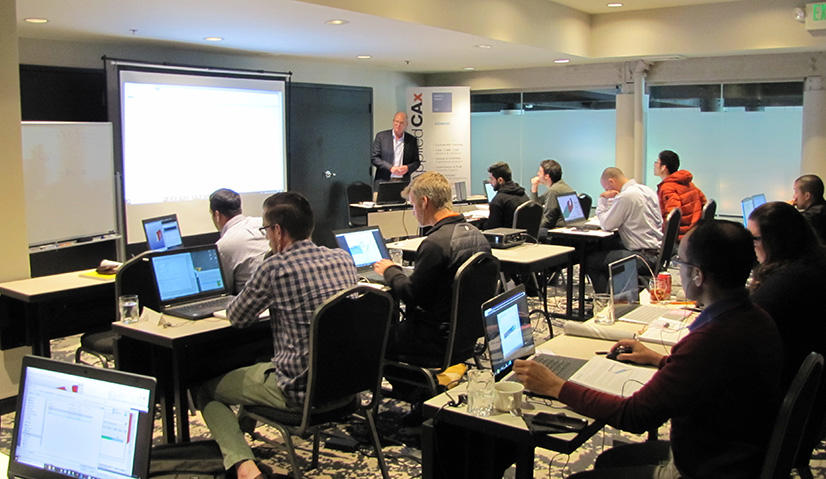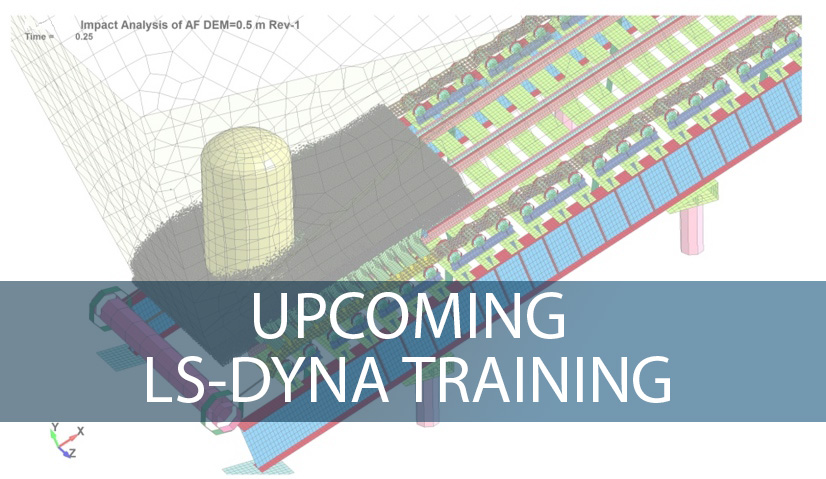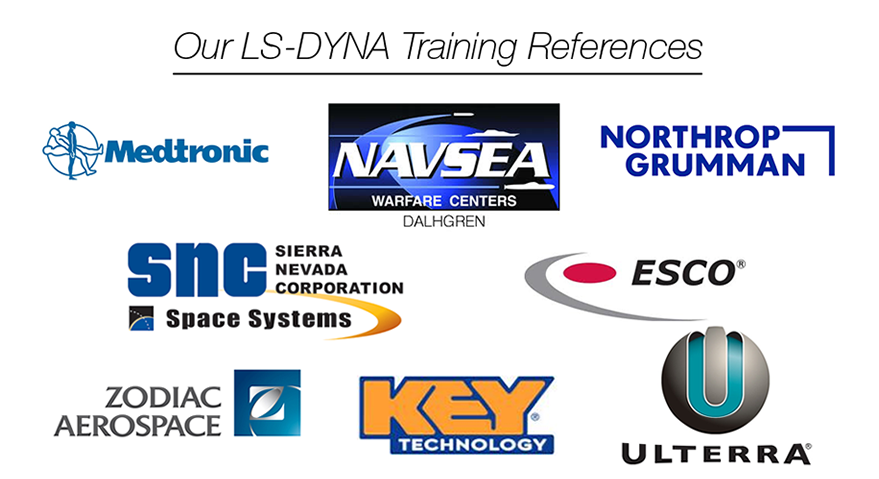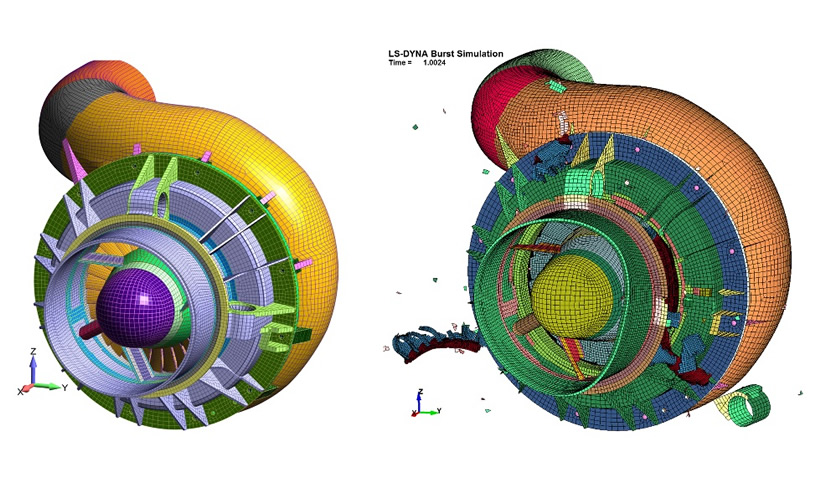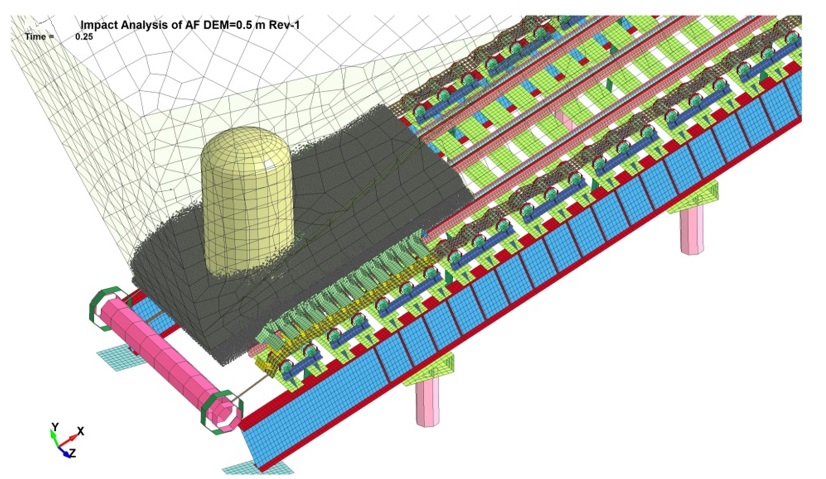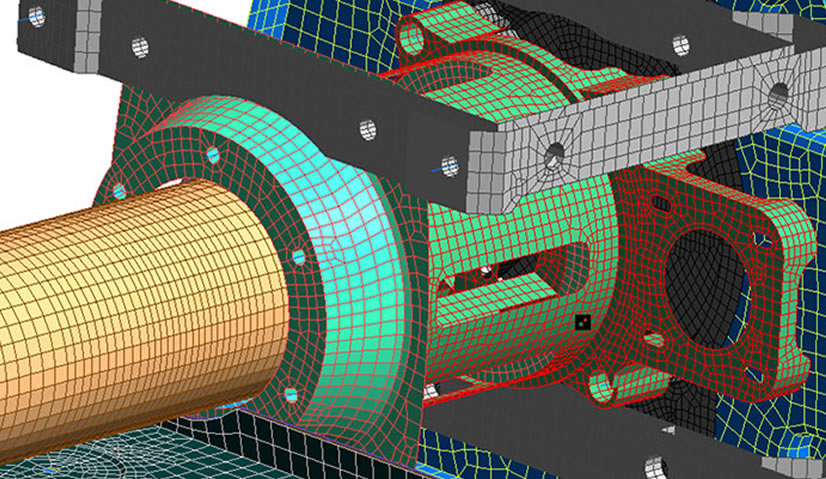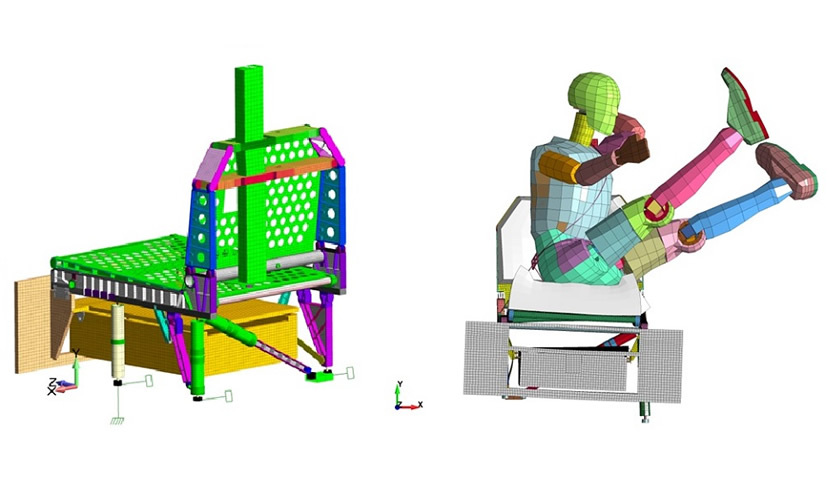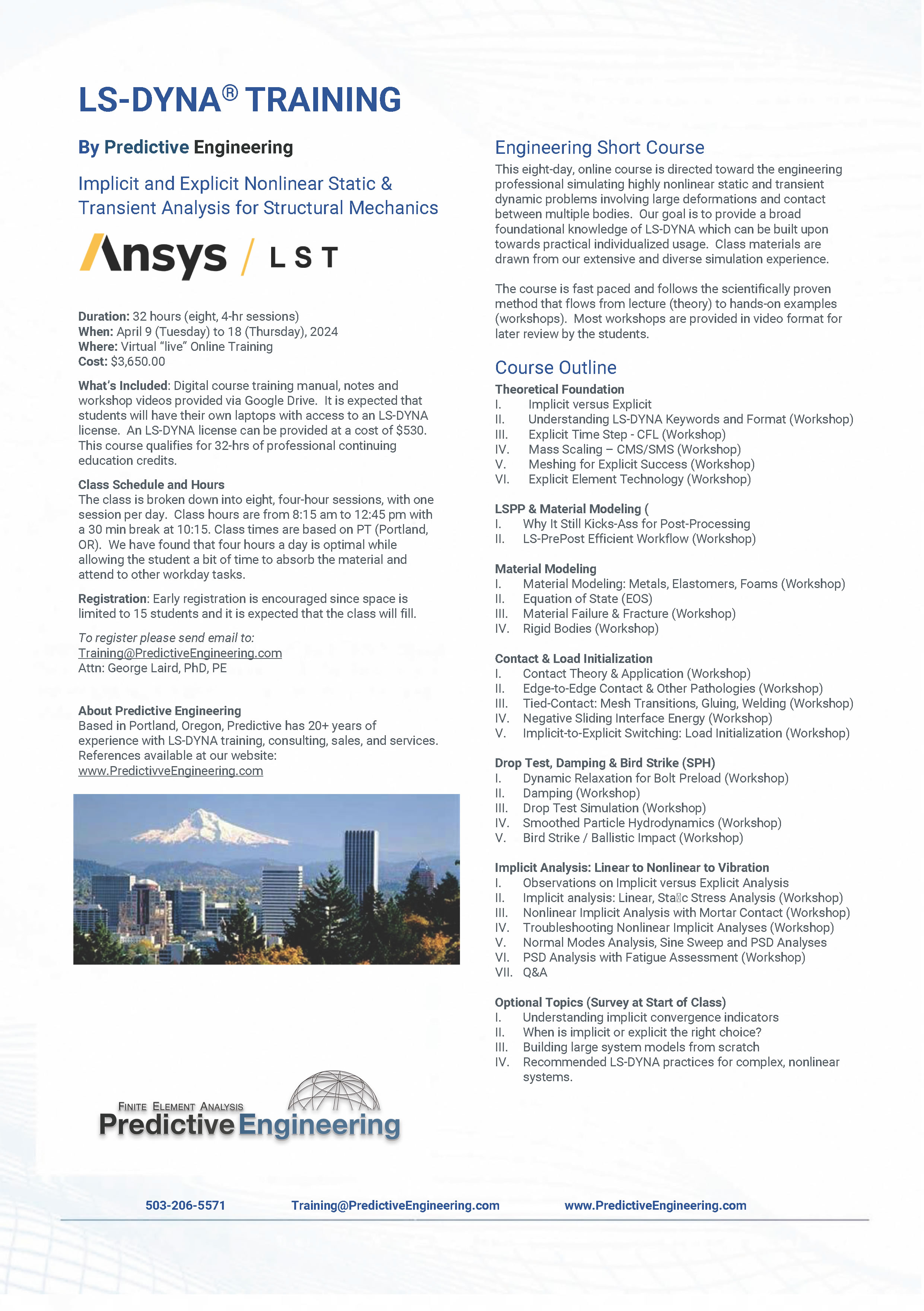LS-DYNA Training
Predictive Engineering is a finite element analysis consultancy based in Portland, Oregon with over 15 years of LS-DYNA consulting experience. We have leveraged this experience to provide a unique LS-DYNA training class that is focused on the mechanical analysis of highly nonlinear systems (e.g., impact analysis, burst containment, drop test, bird-strike, progressive failure of composites, high-deformation analysis of polymers and foams or fluid-structure interaction using DEM / SPH / CFD).
Implicit and Explicit Nonlinear Static & Transient Analysis for Structural Mechanics
- Duration: 32 hours (eight, 4-hr sessions)
- When: April 9 (Tuesday) to 18 (Thursday), 2024
- Where: Virtual "live" Online Training
- Cost: $3650
To register, please click here
Engineering Short Course
This eight-day, online course is directed toward the engineering professional simulating highly nonlinear static and transient dynamic problems involving large deformations and contact between multiple bodies. Our goal is to provide a broad foundational knowledge of LS-DYNA which can be built upon towards practical individualized usage. Class materials are drawn from our extensive and diverse simulation experience.
The course is fast paced and follows the scientifically proven method that flows from lecture (theory) to hands-on examples (workshops). Most workshops are provided in video format for later review by the students.
The class is broken up into 28 workshops with additional material provided by the instructor as needed to clarify more complex LS-DYNA modeling phenonmeum. Workshops are provided in video format for later review by the students along with start and finish Keyword decks. The idea is to minimize the students' unproductive time hunting for information that is not needed to finish the Workshop exercise. Extensive LS-DYNA reference materials will also be provided for independent learning. The class size is restricted to 15 students to allow ample time for questions and also to allow some flexibility in the delivery of the course material.
What’s Included: Digital course training manual, notes and workshop videos provided via Google Drive. It is expected that students will have their own laptops with access to a LS-DYNA license. An LS-DYNA license can be provided at a cost of $530.
This course qualifies for 32-hrs of professional continuing education credits
Class Schedule and Hours: The class is broken down into eight, four-hour sessions, with one session per day. Class hours are 8:15 am to 12:45 pm with a 30 min break at 10:15. Class times are based on PT (Portland, OR). We have found that four hours a day is optimal while allowing the student a bit of time to absorb the material and attend to other workday tasks.
Registration: Early registration is encouraged since space is limited to 15 students and it is expected that the class will fill.
Our promise to you: This class has been taught over 18 times to more than 240 students. At every class iteration, the teaching materials are updated. Reviews specific to the on-line format can be read here.
When Will be Notified That the Class is a Go? Our minimum class size requirement is 8 students. We will notify enrolled students of any possible cancelation no later than two weeks prior to the start of the class.
- Download partial course note set for LS-DYNA Analysis for Structural Mechanics Training
- Read training reviews from previous attendees
- Download course announcement flyer
- Sign up for Training
- Day 1: - Theoretical Foundation
- Day 2 - 3: - LSPP & Material Modeling
- Day 4 - 5.5: - Contact & Load Initialization
- Day 5.5 - 6: - Drop Test, Damping & Bird Strike (SPH)
- Day 7 - 8: - Implicit Analysis: Linear to Nonlinear to Vibration
Contact us if you have questions about course material, class registration/availability or group rates.
Given the depth and complexity of LS-DYNA® software, learning how to use LS-DYNA to create simulations that run quickly and generate accurate results is far from simple. Our experience is based on our consulting experience (see LS-DYNA consulting projects) and our attendance at all levels of LSTC sponsored classes, including Introduction, Advanced, Implicit, Blast, Materials Modeling, ALE, etc. As well we have sponsored and presented research at LSTC Conferences, giving us a unique perspective on how to train other engineers on LS-DYNA.
The foundation of our LS-DYNA training is to provide a hands-on, practical experience for the student that is faced with the challenge of building LS-DYNA models in a commerical environment where time is of the essence and validation is your paycheck. The class covers just enough theory to allow the student to debug and defend their simulations to management and reviewers but not to overwhelm. Class workshops are designed to illuminate important theoretical concepts and also to be applicable to real-world engineering applications. We have spent far more time than we like to admit refining the workshops, such that the student can leverage them going forward with their own simulation projects. If you have time, we would suggest taking a look at a sample of our workshop videos available on YouTube.
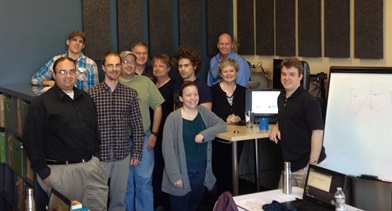 One of the treasures of our class is an extensive set of Class Reference Notes. This noteset is something we use internally within Predictive Engineering and contains condensed reference material, from element formulation to DEM / SPH usage to recommended practices for implicit analysis. Our intent with this LS-DYNA training class is to provide a high-quality learning experience via a combination of theory, workshops and Q&A during the class, but also to provide the tools such that the student can continue learning at their own pace.
One of the treasures of our class is an extensive set of Class Reference Notes. This noteset is something we use internally within Predictive Engineering and contains condensed reference material, from element formulation to DEM / SPH usage to recommended practices for implicit analysis. Our intent with this LS-DYNA training class is to provide a high-quality learning experience via a combination of theory, workshops and Q&A during the class, but also to provide the tools such that the student can continue learning at their own pace.
Although the class uses Femap from Siemens PLM Software for some basic modeling setup, the class is geared toward the construction of efficient and accurate LS-DYNA simulations and the pre-processing part of the class is merely about the importance of creating meshes of high-element quality. During the class, we provide detailed instruction on the use of LSTC's LS-PrePost since it is our favorite tool for final processing of the LS-DYNA Keyword decks and the post-processing of LS-DYNA results
If this class interests you, please read more down below and we would recommend that you download the class notes to get an idea of how we teach.
In addition to our standard LS-DYNA training courses, we offer customized training to meet your company's specific needs at a location that is convenient for you.
Does your team need to ramp up its LS-DYNA knowledge? Speak with our engineers to develop a tailor-made program for your organization.
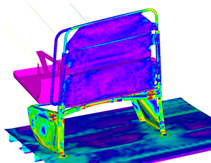
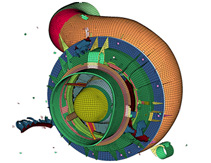
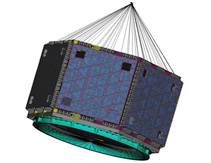
Work with our engineers to customize a course to meet the specific LS-DYNA training needs of your team.
For those unable to attend training in person, we offer the option to purchase class notes from our popular workshops.
These detailed class notes include more than 100 pages of information on topics that are covered in our workshop session. In addition, each set of class notes includes a 45 minute web meeting with an experienced mechanical engineer who will provide follow-up coaching and training with respect to the class material. The cost of each package is $895.
LS-DYNA® Handbook - Course Outline PDF
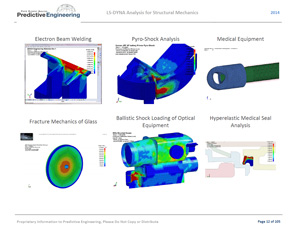
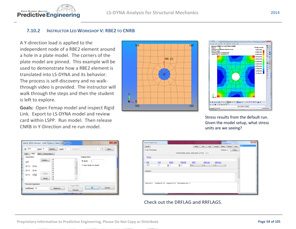
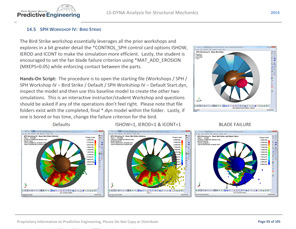
Students attending the workshop in person receive a complimentary set of notes.
Our LS-DYNA Conference Papers and Submissions
Over the years Predictive Engineering has enjoyed presenting at both the North American and the European LS-DYNA conferences. Please preuse some of our presentations and feel free to download relevant examples.
This work was sponsored by the US Army’s Natick Soldier Systems Center to investigate additively manufactured lattice structures for improved blunt impact protection for helmets. The idea is simple enough, modern helmets are designed to deflect or mitigate the impact forces due to bullets (high velocity) but not so much for blunt force impacts (lower velocity). In military operations, blunt force impacts are common, albeit sometimes accidently, due to falls or in the rush to enter-exit buildings and vehicles. In combat, flying debris also present challenges to helmet designers where the impacts can be both high- and low-velocity.
Our work was to set the foundation for the exploration of polymeric 3D lattice structures to create the next generation of energy-absorbing helmet liners for military applications. Current foam liners, whether multi-layer or sculptured, all exhibit more-or-less the same energy-absorbing response which is fine for high-energy impacts but lacks the sensitivity for low-energy impacts. If one can move away from the use of foam and toward that of a 3D polymeric lattice structures, then it should be possible to engineer a helmet liner to have a more variable or tailored energy-absorbing response. To create such structures, the additive manufacturing process was used.
The first phase of this test program was to develop a validated FEA model that could be used to predict the impact response of additive manufactured 3D lattice structures. The additive material used for the lattice structure was a methacrylate photopolymer. Standard static compression, tension and bulk modulus testing was performed on 20 mm thick blocks. The same samples were subjected to impact testing at various strain rates. The static and dynamic data was then fitted onto a series of strain-rate dependent curves. The final *MAT_181 law was then validated against these same coupon tests and shown to have good agreement. This material law was then applied to a 3D lattice model for virtual impact testing. Unfortunately the full-on lattice simulations showed no correlation between FEA and test. Although the material law development was accurate to the coupons and the FE model was verified to other numerical tests, it was reasoned that the material characterization had radically changed from large sample (centimeters) to lattice structure (millimeters).
A core challenge to any finite element analysis (FEA) is figuring out loads and how to apply them. For static events, it is usually straightforward. In the case of durability testing, loads are obtained from accelerometers mounted on vehicles that are driven for hours, if not days on test tracks or routes that hopefully replicate the most severe road conditions possible. These accelerations can then be numerically processed and used for various frequency domain analyses such as a random vibration analysis (i.e., PSD), a frequency response analysis, or steady state dynamics. Although powerful and useful, these solution sequences are all based on the linear normal modes response and do not account for the nonlinear evolution of the structure as it shakes, rattles and rolls. As for a nonlinear material response, forget about it.
Our approach is to describe how one can take the full acceleration time history and with little sacrifice in accuracy, perform a nonlinear, transient dynamic implicit analysis over a time span of 5 to 10 seconds. The reason for choosing implicit analysis is based on two factors: (i) the necessity for finely detailed meshes in regions of high-stress, and (ii) quick solution times.
A series of bus seats was analyzed using this technique and showed good validation against test track data. From a simulation viewpoint, this work could not have been accomplished without the use of the implicit solver since run times were in hours whereas trial explicit runs indicated run times in days on equivalent hardware running with 32 CPU-cores.
The default LS-DYNA settings are tailored for running large explicit analyses. For new and even experienced users, it can be challenging setting up an implicit LS-DYNA analysis to match analytical solutions or other standard implicit FEA codes. For example, the default element formulations are based on single-point integration whereas implicit analyses benefits from full-integration. A series of example problems are provided that will allow the simulation engineer to exactly match industry standard implicit codes (complete keyword decks can be found at DYNAsupport.com). Along with these example decks, CPU-scaling results will be presented for each implicit analysis type from linear to nonlinear.
The dynamic movement of subsea ropes presents an interesting numerical challenge due to the coupling of drag forces with the dynamic response of the rope. Although a FSI approach of fully coupling the surrounding seawater to the rope is theoretically possible it lies beyond the reach of practical engineering when discussing rope lengths in kilometers and possible rope movements in hundreds of meters. A new analysis technique is presented where the drag forces associated with subsea dynamic rope movement are directly integrated into the solution using the LS-DYNA user subroutine, LOADUD. Drag forces are calculated from analytical solutions to provide discrete drag forces as a function of rope position and velocity. This technique avoids the complexity of a fully-coupled FSI solution while providing the major benefits capturing how the rope will dynamically move while lifting heavy loads while being subjected to strong sea currents. Results are presenting showing how a two kilometer rope would dynamically behave while lifting a heavy load from sea bottom to surface under stratified sea currents.
A large composite shipping container was analyzed for drop, impact, PSD random vibration and general stress analysis. The main shell of the container was a glass-fiber vacuum infused composite with closures made of aluminum. Lifting rings and other major structural load points were attached to the composite container using thick aluminum plates with preloaded bolts to distribute point loads into the shell. The uniqueness of this work was that one base model could address progressive composite failure whether under static conditions (implicit) or during drop test analysis (explicit) along with bolt preload and extensive nonlinear contact behavior at closures, skid plates and load rings. Analysis recommendations are provided for general implicit analysis for: (i) PSD random vibration with bolt preload; (ii) progressive failure of composites with *MAT_54; (iii) contact modeling and (iv) optimization of run times using MPP LS-DYNA. The explicit analysis of the container was rather simplistic but some comments will be made about the analysis setup and runtimes.
The Discrete Element Method (DEM) is fast becoming the numerical method of choice for modelling the flow of granular material. Mining, agriculture and food handling industries, among many others, have been turning their attention towards this powerful analysis technique. In this paper, we present three simple calibration modeling tactics that should be the starting point for every DEM simulation of dry and semi-dry granular material. The three tests are designed to be as simple as possible in order to minimize the run time of the test simulations. The tests are developed to be run in a specific order, providing a sequential calibration procedure that does not involve multiple unknown variables in each test.
Other standard testing methods are briefly discussed, such as the rotating drum and the shear cell (Jenike) tests. The complexity of these tests does not lend itself well to initial numerical model calibration as each test involves many unknown variables. However, they are mentioned as an extension of the three basic test models. The paper will help analysts to increase the precision and validity of their discrete element modelling work.
Smoothed Particle Hydrodynamics (SPH) has quickly become one of the most popular mesh-free methods since its introduction in 1977. In the recent years, a great amount of research has been focused on addressing some of the common computational time associated with the SPH method. One of the remaining hurdles is the long computational associated with building the neighbor list. Because of the nature of the original SPH codes (astropyshics), the neighbor search is commonly performed for ecery element in the domain at each time step.

